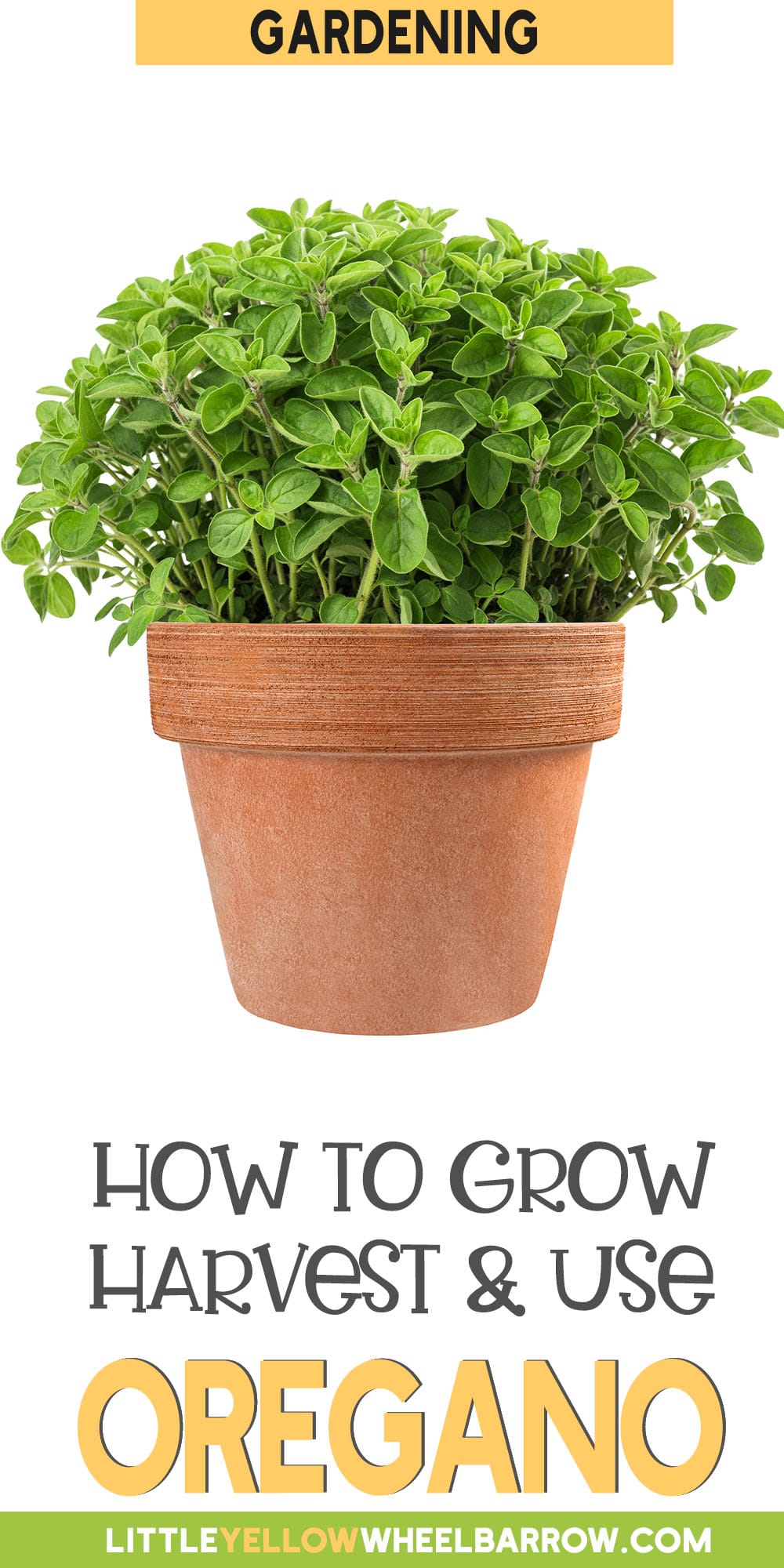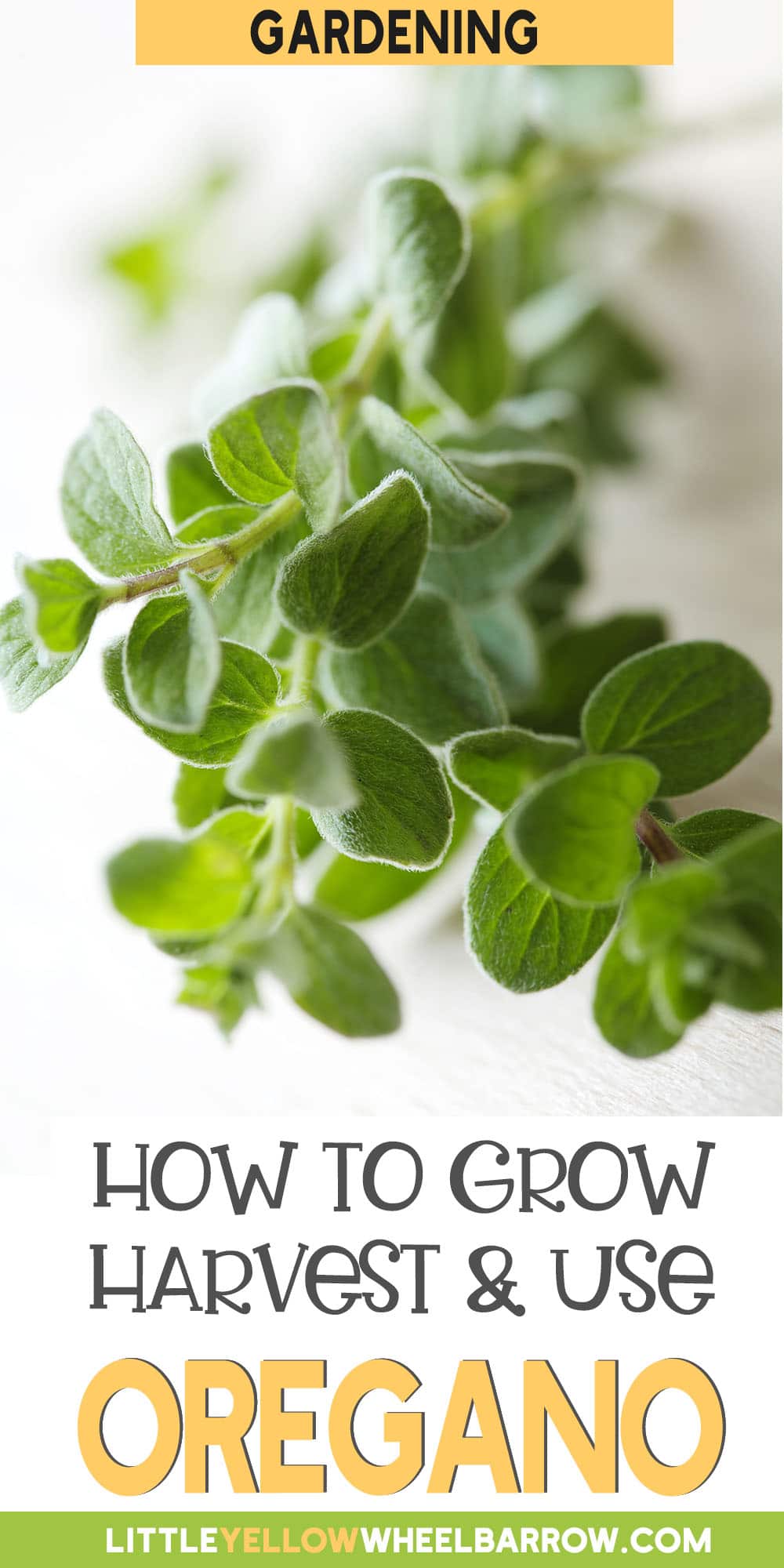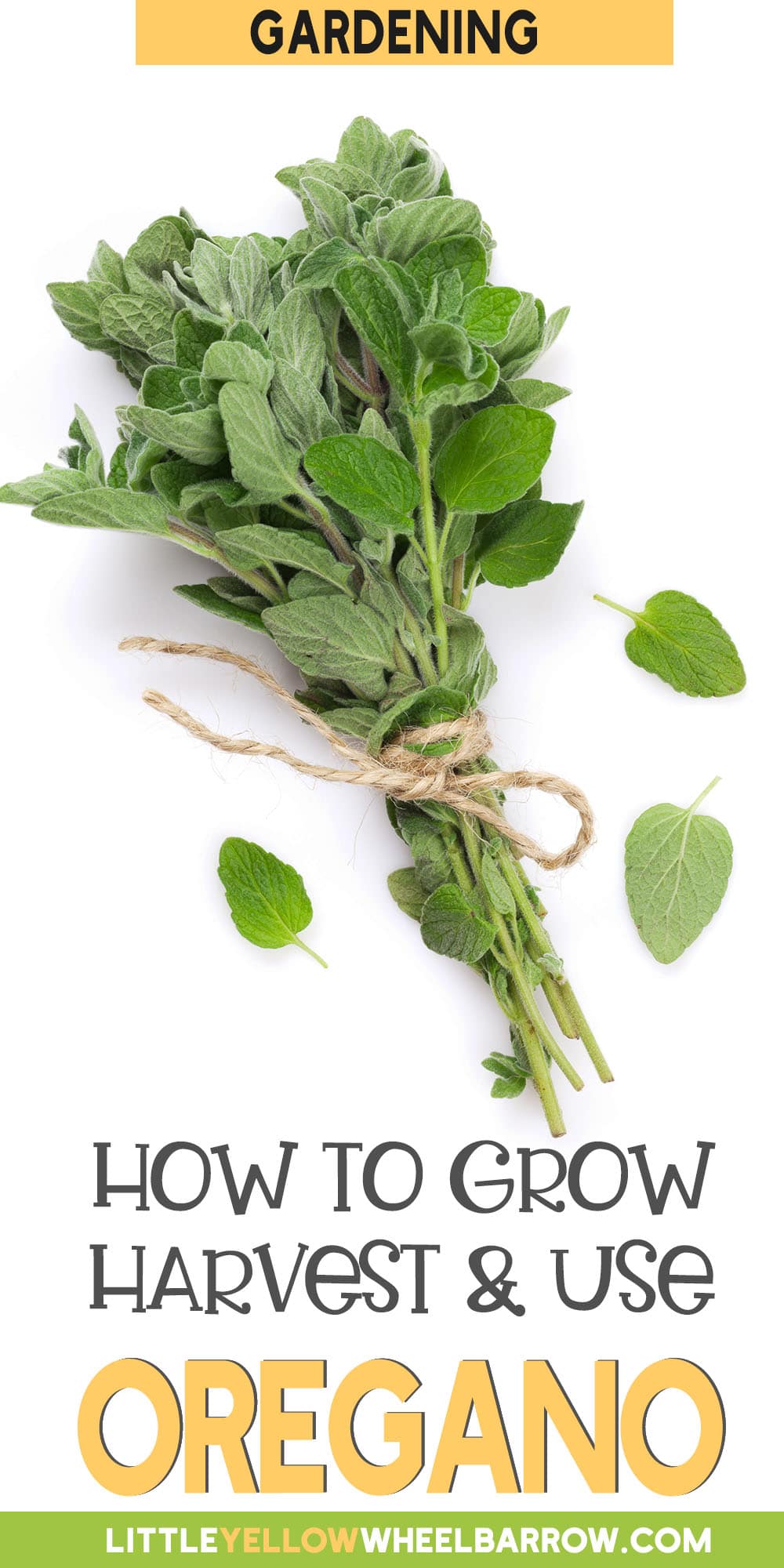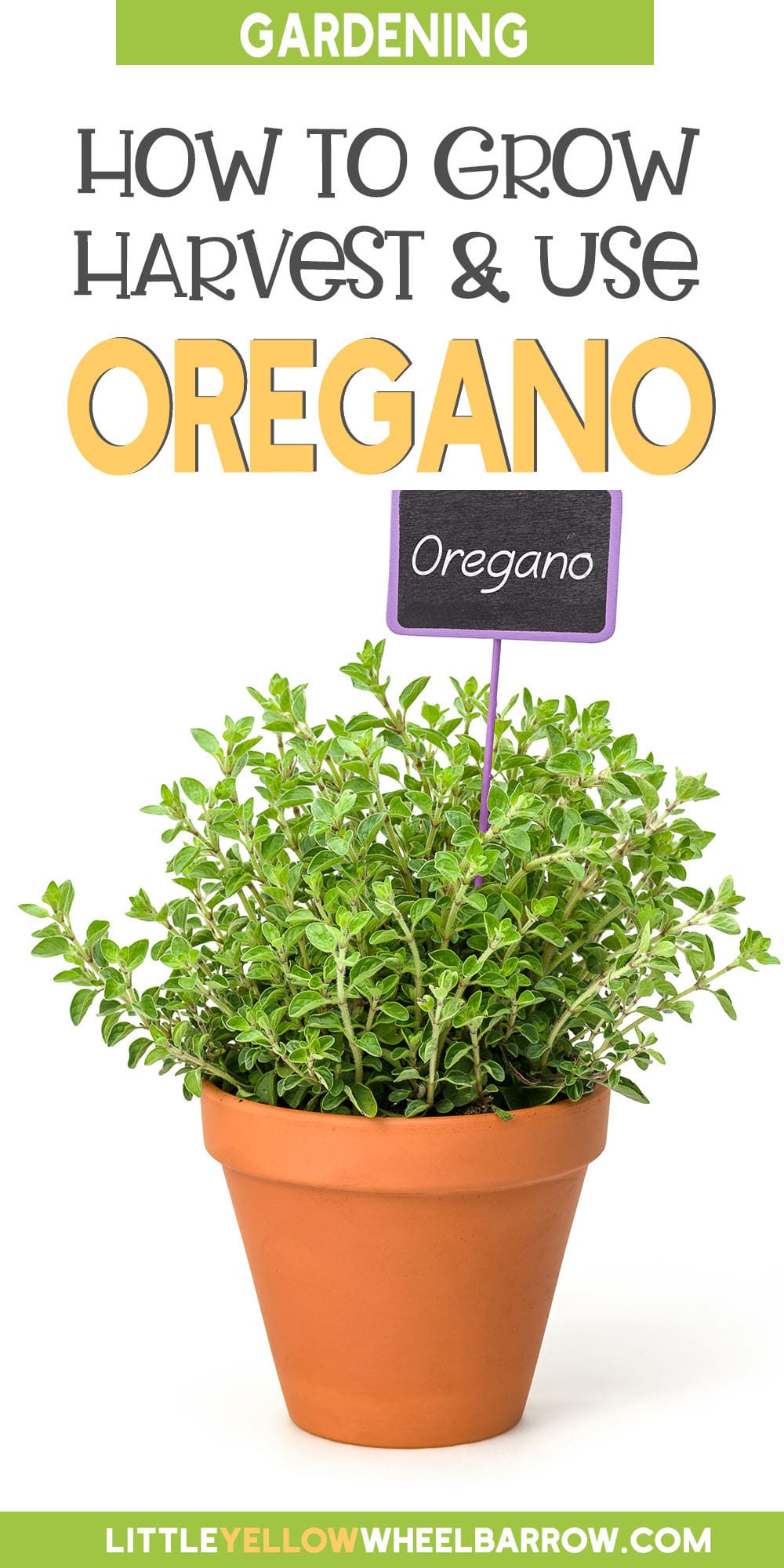How to Care for Your Oregano Plant
The oregano plant is a staple in any type of Mediterranean or Italian cooking, and a must-have for any herb garden. If you’re interesting in growing oregano at home, read on to learn how to grow and care for this delicious herb. In this article we will give you the knowledge you need to grow happy, healthy oregano.

I love the flavor that oregano imparts into recipes. There are many different types of oregano, each with its own uses and flavor profile. But, oregano is much more than just a tasty herb! It can be used as a beautiful, easy-to-care-for ground cover as well as in DIY cleaning and body products.
Oregano plants thrive in well-drained soil and sunny locations, making them suitable for gardens, pots, or even windowsills. Let’s explore this popular herb and learn how to care for it to ensure a bountiful harvest.
About Oregano
A genus of the Lamiaceae (mint) family, oregano is a drought-tolerant, hearty perennial herb that originated in the Mediterranean region and part of western and southwestern Eurasia. Like other types of mint, it has woody stems and small, round leaves.
First used by the Greeks, it was later adopted by the Romans who enjoyed the flavor and helped spread its growth and use throughout Europe and Northern Africa. Oregano only became widely used in North America after soldiers in World War II liked it and brought it back from Europe.

Growing Needs
Oregano is a low-maintenance plant. Provide it with heat, sun, and just a bit of water and it will thrive, providing you with delicious fresh leaves whenever you want them.
- When to plant: Plant your seeds or transplants outside after the risk of the last frost has passed.
- Light: Oregano plants want full sun, but can tolerate part shade.
- Soil: Well-draining or sandy soil.
- Fertilizing: Not usually necessary.
- Watering: Oregano prefers to live a little on the dry side but can tolerate medium moisture.
- Flowers: Pink, lavender, or white in mid-to-late summer.
- Hardiness Zones: 4-10.
- Scientific name: Origanum vulgare.

Growing Locations
Oregano thrives in warm, sunny locations with well-drained soil, making it one of the best herbs to grow indoors on a sunny windowsill. When selecting a spot for your oregano plants, look for areas that receive at least 6-8 hours of sunlight per day. Full sun exposure helps oregano plants develop their signature flavor and aroma.
Additionally, oregano prefers soil that is slightly alkaline and well-draining, as it does not tolerate waterlogged conditions. Raised beds or containers with a sandy, loamy soil mix can provide the perfect environment for oregano to flourish. By choosing a sunny, well-drained location for your oregano plants, you can ensure optimal growth and flavor development.
NOTE: Oregano does tend to spread fairly quickly. It’s not as aggressive as mint plants, but it will definitely try to take over if you don’t keep it contained or trim it back occasionally. The flip side of that quality is that it makes an excellent (and eye-catching) ground cover!

Pests and Diseases
Oregano is resistant to many pests and diseases, but here are a few things to keep in mind when growing oregano plants so they stay healthy and happy:
Harmful Pests
Oregano can fall prey to spider mite and aphid infestations. If you notice bugs attacking your oregano plants, spray them down with soapy water to get rid of them and monitor closely to keep them away.
Diseases
Oregano plants don’t have much of a problem with fungal diseases. They can, however, develop root rot if the soil stays too moist.

Harvesting
To harvest your oregano plant, wait until your plant is 4-5 inches tall and cut off sprigs as needed in your cooking. Strip the leaves and discard the stem. The leaves will be the most flavorful just before the plant blooms, but you can use them anytime.
Before winter, cut your oregano back to the ground and use them fresh, dry them, or freeze them! Read our guide on how to preserve herbs for tips on how to make your oregano harvest last.

Expert Tips
- Sunlight is Key: Oregano thrives in full sunlight, so ensure your plants receive at least 6-8 hours of direct sunlight daily. If you’re growing oregano indoors, place pots near south-facing windows where they can soak up ample sunlight.
- Well-Drained Soil: Oregano prefers well-drained soil with a slightly alkaline pH. Amend your garden soil with sand or perlite to improve drainage, or opt for a well-draining potting mix for container-grown oregano. Avoid waterlogged conditions, as oregano roots are susceptible to rot.
- Pruning Promotes Growth: Regular pruning encourages bushy growth and prevents oregano from becoming leggy. Pinch off the tips of stems regularly to encourage branching and promote new leaf growth. This also helps maintain the plant’s shape and prevents it from flowering too early, which can affect flavor.
- Moderate Watering: While oregano is drought-tolerant once established, it still requires consistent moisture, especially during dry periods. Water your oregano plants when the top inch of soil feels dry to the touch, but be careful not to overwater, as this can lead to root rot. Allow the soil to dry out slightly between waterings to prevent moisture-related issues.
- Harvesting Tips: Harvest oregano leaves when the plant reaches about 6-8 inches in height. To encourage continuous growth, avoid harvesting more than one-third of the plant at a time. Snip stems just above a set of leaves using sharp scissors or pruning shears. For the most intense flavor, harvest oregano leaves just before the plant flowers, when the essential oils are at their peak concentration.
FAQ
Oregano prefers moderate watering. Water your oregano plants when the top inch of soil feels dry to the touch. Ensure that the soil is well-drained to prevent waterlogging, which can lead to root rot.
Oregano can be grown indoors in pots or containers. Choose a sunny windowsill or a location where your oregano plants can receive at least 6-8 hours of sunlight daily. Use well-draining soil and water your indoor oregano plants as needed.
Regular pruning is key to preventing oregano from becoming leggy. Pinch off the tips of stems regularly to encourage bushy growth and promote new leaf development. This helps maintain the plant’s shape and prevents it from stretching out.
Harvest oregano leaves when the plant reaches about 6-8 inches in height. For the most intense flavor, harvest oregano leaves just before the plant flowers, when the essential oils are at their peak concentration. Snip stems just above a set of leaves using sharp scissors or pruning shears.
Both fresh and dried oregano leaves are commonly used in cooking. Fresh oregano leaves have a more vibrant flavor and aroma and are ideal for adding to salads, sauces, and marinades. Dried oregano leaves are more concentrated in flavor and are often used in soups, stews, and sauces. Harvest your oregano leaves and dry them by hanging them in a well-ventilated area or using a dehydrator for long-term storage and use.
Grab Our Ultimate PRINTABLE Garden Planner
With 39 pages of planning and organizing and the ability to customize your planner with the pages you need, you won’t need another planner for the rest of your gardening life!
$4.99 US

Final Thoughts
Oregano is a versatile herb that has had many uses over thousands of years. From its aromatic leaves to its hardy nature, oregano proves to be a versatile and rewarding addition to any garden or indoor space. Whether you’re growing it for use in recipes, aromatherapy, beauty products, or even cleaning products, you’ll enjoy the ease of growing oregano at home.
Related Posts

Author: Laura Kennedy
Writer & Owner of Little Yellow Wheelbarrow










